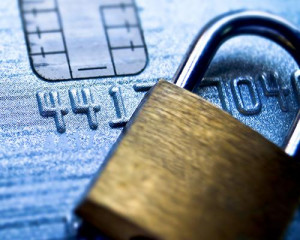5 tips to reduce fraud

The conversation about retail fraud in the last few years has been focused heavily on the e-commerce side of the market.
A lot of fraudulent activity has migrated online, and it’s easy to understand why e-commerce makes it more difficult to verify buyers, while also removing barriers to fraud like EMV chip cards.
However, that doesn’t mean convenience store retailers are off the hook. Card-present fraud is still a very real threat for c-store operators.
Fraudsters rely on deception and trickery, which is what makes fraud so hard to fight. With the right tools and strategies in place, though, it’s entirely possible to put the pressure on fraudsters.
Monica Eaton-Cardone, a risk management and fraud prevention expert and cofounder of Chargebacks911 shares five simples tips to address fraud:
Tip 1: Verify Your Customer
This will seem like a no-brainer to some, but remember that just because an individual is in physical possession of a card, that doesn’t mean the card belongs to that person. You must verify each user at the point of purchase before completing a transaction.
PIN verification is standard for debit cards. Rather than just accepting the customer’s card swipe, be sure to ask for ID. Carefully compare the name and the signature on the ID to the one provided to try and verify your buyer.
Tip 2: Complete Your EMV Conversion
EMV chip cards use tokenization technology. This means instead of transferring your customer’s cardholder information by swiping the magnetic stripe, the card creates a one-time-use token for conducting the transaction. The cardholder’s information is never transferred, making it difficult for fraudsters to steal via skimming or hacking.
Tip 3: Embrace Mobile Payments
Mobile wallet apps like Apple Pay and Samsung Pay are a lot more than just fancy bonus features. First, these platforms use the same tokenization technology as EMV cards, so you and your customer are protected on that front. Second, payment apps use two-factor authentication to verify their users’ identities.
When a buyer checks out with a mobile wallet, that person must first unlock the device using a secure passcode. Then, to complete the sale, the user must also verify his/her identity in-app; this is usually done via a biometric scan, like a fingerprint or facial scan. In effect, these apps are perhaps the most secure payment platforms currently on the market.
Tip 4: Be Aware of Employee Conduct
Your employees are a vital asset. But, without the proper training, they could become a major liability.
Employee-assisted fraud is an extremely common practice, duping employers out of billions of dollars each year. However, it’s not just deliberate bad actors on your payroll for whom you need to watch out. Workers who aren’t trained to identify potentially fraudulent activity can be even costlier.
Make sure you regularly train your employees on fraud prevention best practices, data security, and how to verify customers. After all, your employees are your real first line of defense.
Tip 5: Keep Tabs on Fraud
Even if you do everything right, there’s still no guarantee that you’ll be protected in every situation. Fraudsters are smart, and they’re constantly looking for new way to cheat the system.
Keep tabs on new developments in fraud tools and technologies, as well as the strategies criminals are using to beat them. We’re always going to play a defensive game against fraud, so give yourself the best advantage possible by studying your opponent and learning how to counter their attacks.
Originally published at Convenience Store News.
